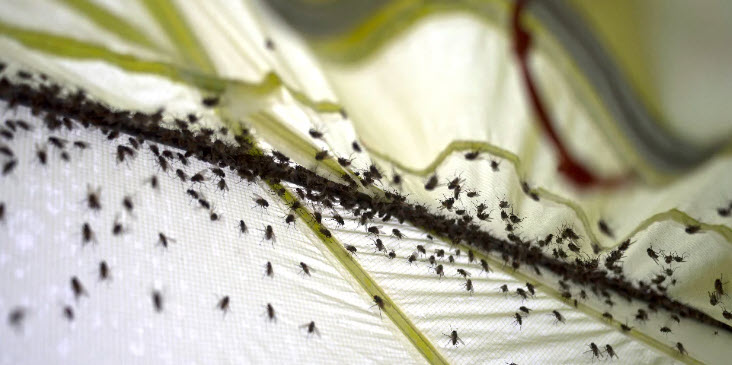The no-see-um is a bothersome pest that can cause uncomfortable bites and prevent you from enjoying your time outdoors. Understanding the habits of these pesky critters is key to taking back your outdoor enjoyment. One way in which you can minimize the effect of no-see-ums is by understanding how these insects reproduce. Here is a closer look at the breeding habits of the no-see-um.
No-See-Ums Breeding Habits
When adult no-see-ums are ready to reproduce, they will look for a damp area to breed and lay their eggs. The female no-see-ums prefer to lay their eggs in moist soil. This means they may breed near the edges of springs, streams, and ponds. However, they may also choose muddy areas that are not near major bodies of water. Swampy areas also become breeding grounds. The bugs may even breed in the water puddles around outdoor air conditioning units, according to the University of Arizona.
In other words, all a no-see-um needs to lay eggs is a moist area. While they may be more prevalent near bodies of water, anywhere that has wet, moist soil is present. The larvae require moisture to develop, and the length of time it takes them to grow into adults depends on environmental factors.
No-see-ums will breed up to seven times per year. Each time the no-see-um breeds, the female can lay up to 400 eggs at a time. This means the insects reproduce incredibly quickly. They do have a relatively short lifespan, but can reproduce many times during that lifespan. This is why it’s not uncommon to find swarms of the insects in wet, moist areas.
Breeding and Blood Meals
Before a female no-see-um can make eggs, she must have a blood meal. This is what triggers the insects to bite. Only the females bite, and only when they’re preparing to lay eggs. According to the National Park Service, biting behavior peaks during peak breeding periods, which is in the late spring and early summer. Biting may also during rainy periods after droughts, because the insects finally have the right conditions for reproducing.
Can No-See-Ums Reproduce Inside Your Home?
No-see-ums do sometimes get inside homes, but they rarely multiply in your home. It is possible for the insects to multiply in the moist dirt around potted houseplants, this is unlikely to happen, and there are not other areas of moisture within the home that lead to breeding. If you’re having trouble with no-see-ums inside your home, it is likely because they are entering in search of a blood meal, not because they’re reproducing inside your home.
Why is it important to understand the reproductive habits of no-see-ums? This understanding will help you better protect yourself from these pests. By understanding where and when they reproduce, you can take measures to prevent them, or you can avoid the areas to reduce your chances of getting bitten.

